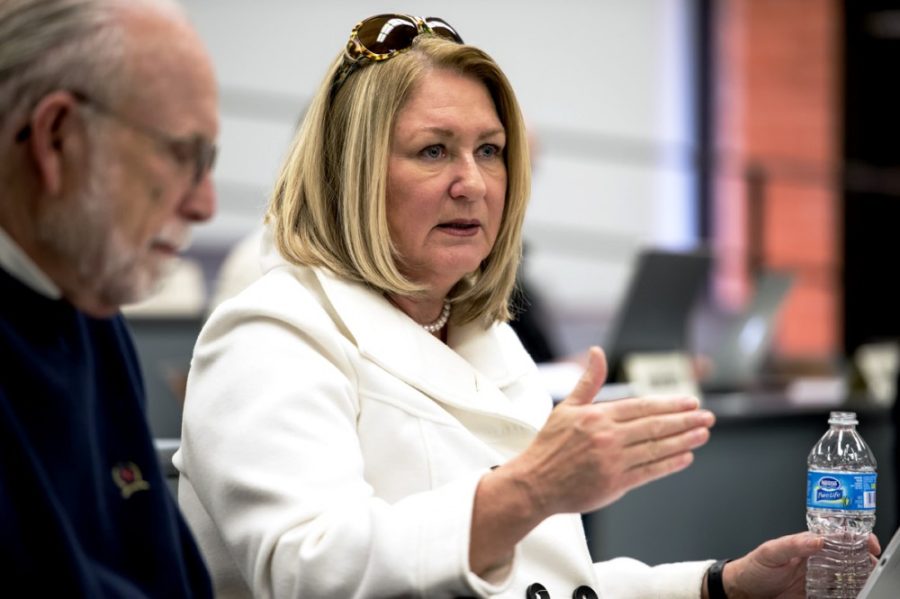University administrators are working directly with students as they begin to create a new model for guaranteed tuition.
Members of the Associated Students of the University of Arizona presented an update on their Guaranteed Tuition campaign at the Faculty Senate meeting on Monday. ASUA launched the initiative two weeks ago, pushing for a tuition model in which students can expect same tuition for four years.
UA President Ann Weaver Hart said James Hyatt, UA interim senior vice president for business affairs and chief financial officer, has already started to model this year’s tuition based on the guaranteed tuition model. Students would likely pay more for their first two years on a set tuition model than on the current model to make up for predicted increases, Hart said.
A set tuition model would help the university’s retention rate and help motivate students to graduate in four years, said Garrett Voge, ASUA government affairs and policy director. Guaranteed tuition would also help students make long-term plans when taking out loans or looking for a job as they start their freshman year, Voge added.
“Tuition prices have been volatile in the past,” Voge said. “We just don’t think that’s fair, if you’ve already been in school for a couple of years that your tuition changes so drastically.”
Northern Arizona University adopted a similar tuition model called PLEDGE, where freshmen who started in the fall of 2013 were guaranteed a set tuition for four consecutive years. The state is also considering fixed tuition as an option for all public university students in Arizona with House Bill 2244, which was introduced in January. Voge said ASUA is not advocating for H.B. 2244 to pass but is pushing for the tuition model, whether it comes from the state or from within the institution.
However, Hart said a set tuition model is best if it comes from within the institution, so that there isn’t a locked-down system. If a fixed tuition model is adopted, it would likely start out as a voluntary system.
The Residence Hall Association, the representative body of students who live in residence halls, also voted to support the initiative, and the online petition had almost 1,000 signatures as of Monday afternoon, Voge added.
Hart also updated the Faculty Senate on where the UA stands in its effort to get more funding for the university in the state budget this year. The goal is to include the UA’s requested $15 million in the budget proposal before the budget is voted on.
The president urged senate members to take any opportunity they have to remind state government leaders of the importance of this funding to the UA as it moves forward with its academic strategic plan, which focuses on research growth and student engagement in the community. The UA requested $15 million to support the strategic plan and has gained the support of the Arizona Board of Regents, which mirrored the request in its funding recommendation.
Sen. Andrew Silverman asked Hart about Gov. Jan Brewer’s stance on adding funding for the UA to the state budget. Since the governor presented her budget proposal, Hart said, she has made it clear that there isn’t any more money to be allocated to the UA. Gaining support from other state leaders to add UA funding to the budget will be key in obtaining the $15 million, she added.
“She was really honest with me about that,” Hart said. “There’s no way we’re going to get … the governor to come out and say, ‘Oops, my budget was wrong; I changed my mind.’”








